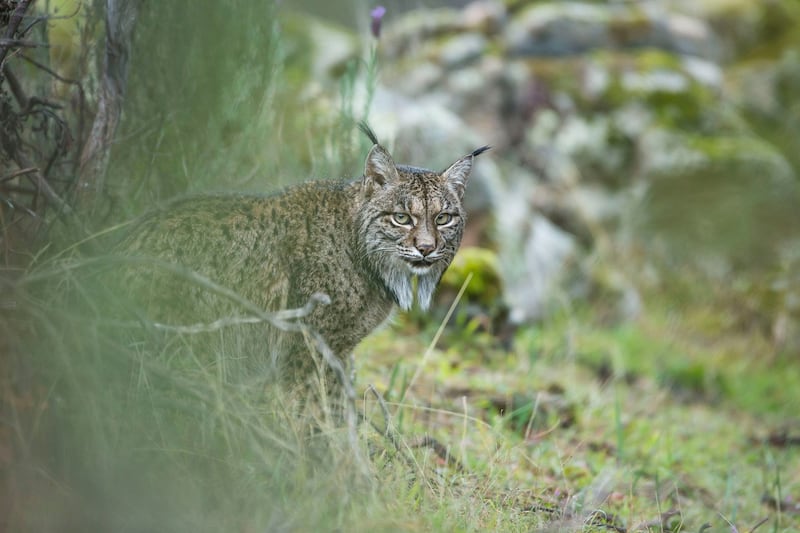In 2019, the then leader of the Green Party, Eamon Ryan, suggested wolves should be reintroduced to Ireland in order to “bring back a sense of ecology” to our nature-depleted country.
He recently admitted the idea “actually has a real logic to it but [his proposal at the time] scared a lot of horses”, implying that it contributed to the demise of the Green Party in 2024’s general election.
The scorn and ridicule that greeted the suggestion at the time was perhaps reflective of the enormous gulf that has emerged between people and the natural world, particularly the dire state of biodiversity in Ireland. However, there are signs that that gulf is closing.
In 2022, an editorial in this newspaper called for a “considered” response from the State to the reintroduction of predators, not only wolves but also the smaller, and probably less controversial, lynx. This was prompted by the publication of research from Queen’s University Belfast and Cornell University in the US, which showed that predator reintroduction could play an important role in controlling alien invasive species across the world, which in Ireland would include grey squirrels and sika deer. The Irish Times proclaimed that “their study presents a persuasive case for restoring native predator mammal populations”.
READ MORE
In 2023, among the recommendations of the Children and Young People’s Assembly on Biodiversity Loss was to “restore and reintroduce native species including trees, plants, flowers and predators (eg wolves)”, although the adults in the Citizens’ Assembly on the same topic demurred in this regard, suggesting that planning for the reintroduction of large predators remains taboo in many quarters. It would be a brave politician to follow Eamon Ryan on what would be seen as a political kamikaze mission.
Nevertheless, the ecological science backing the need for top predators to regulate ecosystems is settled. Given the link between land use, particularly forestry, and carbon emissions, there is no long-term scenario in Ireland where we meet environmental targets without the presence of large carnivores.
[ Rewilding: A meaningful response to tackling the biodiversity crisisOpens in new window ]
We now even have published research evaluating the suitability of existing conditions in Ireland for both wolves and lynx. A frequent criticism of calls to reintroduce these species has been that we don’t have enough “wilderness” areas in which they could survive. While most European countries have large areas of forest and mountain habitats (not wilderness but areas with a lot of natural vegetation, low human population density and low-intensity farming), in Ireland even our forest and bog areas are seriously degraded due to sheep grazing, monoculture tree plantations and peat extraction.
One study, led by Colin Guilfoyle at the Atlantic Technological University, found that Ireland’s forests were too small and isolated from each other to support a population of lynx over the long term. However, a similar study, led by Kilian Murphy at University College Dublin, found that this would not be an issue for wolves.
Through a number of modelled scenarios, the researchers found that long-term survival of wolves, based on reintroduction to one of our national parks, was possible. However, since our national parks are small, and wolves would soon disperse far beyond their boundaries, “human-wildlife conflict warning signs emerged”, said the researchers.
Based on these preliminary studies, it would appear that we need more, and more connected, forest areas for lynx to survive (something that is already an imperative if we are to address legally binding climate targets) but a bigger issue is people and the need for strategies to allow for “coexistence” with large animals.

What we really need is a study, not on the lynx or the wolves, but on people and how our values, attitudes and perceptions can evolve to a point where all species are living alongside each other. Thankfully a new, landmark publication is looking at just that.
Living with Lynx: Sharing Landscapes with Big Cats, Wolves and Bears (Pelagic, 2025) is not the first book to suggest bringing predators back to Ireland. However, it is the first to breakdown what that challenge looks like and what the necessary steps towards such a project might be.
Its author, Jonny Hanson, is an environmental and social scientist at Queen’s and someone who has direct experience of how people can coexist with large predators, particularly snow leopards in Nepal. Co-existence, he says, has replaced the older term of “human-wildlife conflict” and “tries to understand the more nuanced aspects of sharing landscapes with lynx, wolves or bears”.
This includes what he calls the “complex social dynamic” between various groups of people such as farmers, rewilders, hunters, government officials and tourism entrepreneurs, for instance. “Co-existence is less about conflict between people and predators and more about conflict between people over predators. So, you really have to understand people, and all our many hang-ups and perspectives, particularly with these species.”
Ireland is one of the few countries globally with no large mammalian predators. However, this conceals a wider divide, regardless of whether we’re talking about wealthy countries in Europe or poorer ones in Africa or Asia, between those who are most affected by the presence of these animals – farmers and animal herders, most usually – and those who will not suffer direct negative consequences.
He notes that in Ireland particularly, but also in large parts of western Europe, “we have lost the memory of living in landscapes with predators and so our engagement with these species is mediated by things like going to the zoo, watching documentaries or, God forbid, Disney stories”. These present a simplistic picture that, he says, “are disconnected with the messy reality of sharing landscapes with people”.
The Netherlands, which has one of the highest human population densities in the world, has more than 100 wolves spread among 11 packs
Hanson recently published research on attitudes towards carnivores among farming organisations in Ireland and Britain, and he says the most common reaction from interviewees was: why? “Those that are interested in rewilding and nature conservation broadly understand the ecological case for having wolves and lynx. Those in the farming sector ... I don’t think the case has been made to them.”
Beyond that, he says, “I was expecting the farming community to tell me this is just a terrible idea, and as a general rule that was the consensus”, but, persisting, he laid out how it was done in other countries and thought he would end up talking about the specifics about how farmers protect their livestock with guard animals, fences and so on.
Instead, before he could get to that, he found himself having “fairly in-depth conversations about the context in which farming finds itself at the moment ... that it is changing and presenting challenges, particularly for small to medium-sized farms, which are precisely the areas where reintroduction of predators is likely to happen. So, this discussion is not happening in a vacuum but is taking place in a broader context which is political, economic, social and technological, and is quite volatile.”
If there is a path forward, Hanson says the key element is governance. “Finding ways to manage disagreements, to disagree agreeably, to bring multiple perspectives together, to potentially zone landscapes; to say that in certain areas the priority is food production, in other areas the priority is biodiversity and wildlife ... To me that’s a really important place to start.”
He points to the Netherlands, where preparations for wolves naturally recolonising from Germany started in the 1990s, before the wolves themselves became established. Today the country, despite its landscape being as far from “wilderness” as it’s possible to be, and with one of the highest human population densities in the world, has more than 100 wolves spread among 11 packs. Challenges remain, but this is probably the best template for how a reintroduction of wolves or lynx might happen in Ireland.
Hanson says he has written his book to promote an “informed discussion” on the issue although he also says that he is “on the fence” as to whether we should be actively pursuing the reintroduction of predators to Ireland. He worries about the potential for social conflict but stresses that “I don’t want Goldilocks and the Three Bears to be the basis for people’s understanding of this issue”.
In this regard, his book is an excellent contribution to the debate.
- Sign up for push alerts and have the best news, analysis and comment delivered directly to your phone
- Join The Irish Times on WhatsApp and stay up to date
- Listen to our Inside Politics podcast for the best political chat and analysis



















